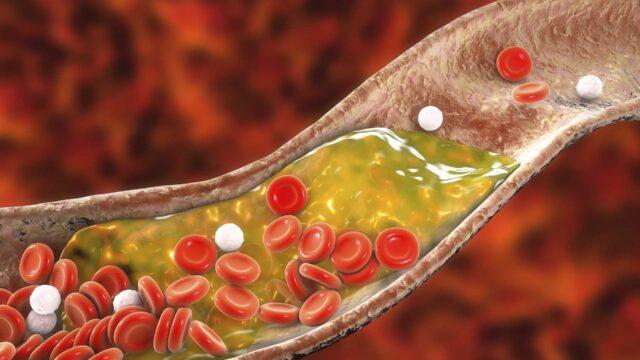FTC disclaimer: This post may contains affiliate links and we will be compensated if you click on a link and make a purchase.
Consuming the proper Omega 6 to Omega 3 essential fatty acids (EFAs) ratio is critical to your health, but many people are unaware of it.
The balance you are looking for, according to many experts, is between 2 and 4:1, Omega 6 to Omega 3.
However, some experts suggest an equal balance or even taking in more Omega 3s than Omega 6s.
To truly understand the importance of your Omega 6 to Omega 3 ratio and how you can achieve the desired balance, you must know more about these two EFAs, also called polyunsaturated fatty acids (PUFAs).
What are Omega 3s?
Omega 3 is an EFA (Essential Fatty Acids). It is necessary for your health, yet your body does not produce it. You must take in Omega 3 through your food or as a supplement.
Why is Omega 3 essential?
The critical forms of Omega 3, which have been thoroughly tested and found to have multiple health benefits, are docosahexaenoic acid (DHA) and eicosapentaenoic acid (EPA).
DHA and EPA are involved in immune function, blood clotting, and cell growth, and they are components of all of your cell membranes (and there are somewhere between 50 million and 100 trillion of those critters!).
Omega 3 is also a natural anti-inflammatory. Studies indicate that Omega-3 helps combat inflammatory and auto-immune diseases because of its anti-inflammatory properties.
Deficiencies of Omega 3 have been linked to approximately 50 diseases, including cancer, heart disease, diabetes, stroke, and arthritis.
Sources of Omega 3
There are both vegetable and animal sources of Omega 3.
The vegetable sources of Omega-3 are walnuts, flaxseeds, kidney beans, Seaweed and Algae, Hemp seed, and Chia seeds.
It contains an Omega-3 called alpha-linolenic acid, or ALA, that your body can convert to EPA and DHA.
The most common animal sources of Omega 3 are cold-water fish such as salmon, sardines, herring, mackerel, black cod, Hoki, and bluefish. These contain the more valuable EPA and DHA.
What are Omega 6s?
Omega-6 is a type of EFA that comes in various forms, such as linoleic acid (LA) and arachidonic acid (AA, or sometimes ARA).
Why is Omega 6 important?
Omega-6 fatty acids play a crucial role in brain function and normal growth and development.
They also help stimulate skin and hair growth, maintain bone health, regulate metabolism, and maintain the reproductive system.
As do Omega 3s, Omega 6s reduce the risk of heart disease.
However, Omega 6s tend to promote inflammation.
Sources of Omega 6
The good source of Omega-6 is found in the following foods:
- Walnut
- Peanut and peanut butter
- Hemp seeds
- Sunflower seeds
- Avocado oil
- Sunflower oil
- Tofu
- Eggs
The bad and high concentrations of Omega 6 are found in the following foods:
- All regular (not organic) meat such as beef and chicken
- All processed foods include cookies, cakes, commercial desserts, and packaged snacks.
The Proper Omega 6 to Omega 3 Ratio
Both Omega 3 and Omega 6 are EFAs. It would help if you had them both in your diet.
But, as you have learned, there are differences. Omega 6s tend to produce inflammation, while Omega 3s are natural anti-inflammatories.
Also, Omega 6s cause “stickiness” in the blood, which is good because it allows your blood to clot, but it can become harmful if there is too much of it, leading to blood that clots too quickly, resulting in strokes.
Therefore, the health key is to maintain a proper balance or ratio of Omega 6 to Omega 3.
What’s the magic ratio, you ask?
Throughout the history of humanity and before industrialization, we have taken in Omega 6s and Omega 3s on an essentially 1:1 ratio.
But now, the scenario is different.
Beginning somewhere between 50 and 100 years ago, people eating a so-called western diet (high in processed foods) have taken in approximately 20 times more Omega 6 than Omega 3!
A study found that the Mediterranean diet, which does not include much meat, emphasizes foods rich in Omega-3 fatty acids are more balanced in the Omega 6 to Omega 3 ratio.
The most common food they have included in the Mediterranean diet are whole grains, fresh fruits and vegetables, fish, olive oil, garlic, and moderate wine consumption.
Today, most studies stated that an acceptable goal is a ratio of 2 to 4:1 Omega 6 to Omega 3.
Some experts advocate a 1:1 ratio, and some others even recommend consuming more Omega 3s than Omega 6s.
Studies have shown that excessive Omega-6 and a very high omega-6/omega-3 ratio promote cardiovascular disease, cancer, and inflammatory and autoimmune diseases.
On the other hand, increased levels of Omega-3, and a low omega-6/omega-3 ratio, suppress those diseases.
The studies indicate that the optimal ratio may vary with the disease. Therefore, you should consult with your doctor on the proper ratio you should seek.
How Do You Balance Your Omega 6 and Omega 3 Intake?
Suppose you suffer from eczema, psoriasis, arthritis, diabetes, or mastalgia (breast tenderness). In that case, you may be deficient in Omega 6, and you should consult with your doctor to learn if you should be taking an Omega 6 supplement.
However, more often, especially if you eat a western diet, you probably need more Omega 3, less Omega 6, or both in your diet.
To achieve that goal, you should eat more foods high in Omega 3s, such as cold-water fish, tuna, cod liver, halibut, herring, mackerel, trout, salmon, Hoki, and sardines.
And, you should eat less processed foods made of, or cooked in, vegetable oils.
Or both!
If you cannot consistently eat a healthy ratio of Omega 6 to Omega 3, you should consider a pure, molecularly distilled Omega 3 fish oil supplement.








